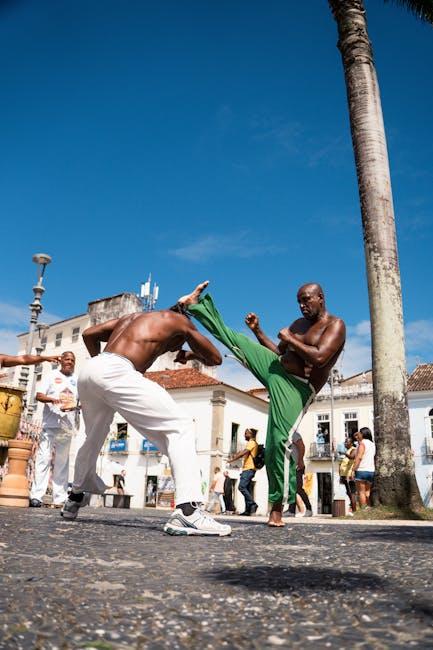In the realm of cinematic history, classic films stand as monumental testaments to the artistry and cultural narratives of their time. These masterpieces not only captivate audiences with their storytelling and visual prowess but also serve as intricate reflections of the socio-political landscapes from which they emerged. Analyzing the historical context behind these iconic films reveals a tapestry of influences—ranging from economic upheavals and technological advancements to shifting cultural mores and ideological struggles. This article delves into the complex interplay between the era-specific realities and the timeless allure of classic cinema, offering a nuanced understanding of how these films both shaped and were shaped by the world around them. Through a confident exploration of these dynamics, we uncover the enduring legacy and relevance of these cinematic gems in the ever-evolving narrative of human experience.
Cinematic Milestones: Tracing the Evolution of Classic Films
Understanding the historical context of classic films allows us to appreciate their profound impact on both cinema and society. In the early 20th century, films like “Metropolis” and “Nosferatu” emerged from a post-war Europe grappling with rapid industrialization and existential angst. These films not only pushed the boundaries of visual storytelling but also mirrored the socio-political turbulence of their times. As the world transitioned into the Great Depression, Hollywood’s Golden Age produced iconic films such as “Gone with the Wind” and “The Wizard of Oz”, offering audiences an escape from reality while subtly commenting on issues of race, class, and identity.
The post-war era brought about a new wave of cinematic innovation. Directors like Alfred Hitchcock and Federico Fellini redefined suspense and surrealism, reflecting the complexities of a world divided by the Cold War. Films during this period often explored themes of paranoia, alienation, and the human psyche. Key titles from this era include:
- “Psycho” – A masterclass in suspense and psychological horror.
- “La Dolce Vita” – A poignant exploration of existential ennui and modern decadence.
- “Dr. Strangelove” – A satirical take on the absurdities of nuclear brinkmanship.
These milestones not only shaped cinematic techniques but also challenged audiences to confront the pressing issues of their time, making them timeless in their relevance and artistry.

Influential Forces: Unpacking Historical and Cultural Contexts
The greatest classic films are more than mere entertainment; they are a reflection of the historical and cultural forces that shaped their creation. These films often capture the zeitgeist of their time, providing insight into societal norms, political climates, and cultural shifts. For instance, the post-war era brought about a wave of film noir, deeply influenced by the disillusionment and cynicism that permeated society after World War II. This genre’s dark, moody aesthetics and morally ambiguous characters mirrored the complexities of a world grappling with the aftermath of global conflict.
- Social Change: Films like “Guess Who’s Coming to Dinner” challenged racial norms during the civil rights movement.
- Political Influence: The Cold War era gave rise to spy thrillers and science fiction that explored themes of paranoia and technological advancement.
- Technological Advancements: The introduction of color and sound transformed storytelling, allowing filmmakers to explore new realms of creativity.
Understanding these contexts enriches our appreciation of classic films, revealing them as products of their time that continue to resonate today.

Masterful Storytelling: Techniques That Defined an Era
The golden age of cinema was marked by the emergence of groundbreaking storytelling techniques that have become synonymous with the era’s most iconic films. Directors and screenwriters of the time crafted narratives that transcended the screen, creating timeless classics that continue to captivate audiences. These films were not just stories but experiences, shaped by a variety of innovative methods.
- Non-linear Narratives: Many classic films utilized non-linear storytelling to weave complex plots, keeping audiences engaged and intrigued. This technique allowed filmmakers to explore characters and themes in a more profound way.
- Visual Symbolism: The use of powerful imagery and symbols added layers of meaning, enabling viewers to interpret the story on multiple levels. This approach enhanced the emotional impact and depth of the films.
- Character Development: Rich, multidimensional characters became the heart of the narrative. Filmmakers invested in deep character arcs, allowing for authentic growth and transformation that resonated with audiences.
- Dialogue and Monologues: Carefully crafted dialogue and poignant monologues provided insight into the characters’ inner worlds, creating memorable and quotable moments that have stood the test of time.
These techniques not only defined an era but also set a benchmark for future generations of filmmakers. The classics continue to be studied and revered, offering a masterclass in storytelling that remains relevant in the modern cinematic landscape.
Preserving Legacy: Recommendations for Modern Filmmakers
To honor the legacy of classic films while forging new paths, modern filmmakers should consider a blend of innovation and homage. Understanding the historical context of classic films can provide a rich tapestry of inspiration. Filmmakers should delve into the cultural, political, and social nuances that influenced these timeless masterpieces. This understanding not only enhances storytelling but also deepens audience engagement.
- Study Iconic Techniques: Analyze the groundbreaking techniques that defined classic cinema, from Hitchcock’s suspenseful framing to Kubrick’s meticulous symmetry.
- Embrace Authenticity: Authentic storytelling resonates deeply. Reflect on how classics portrayed genuine human experiences and emotions.
- Balance Tradition and Innovation: While it’s crucial to innovate, blending traditional narrative styles with modern technology can create compelling cinema.
By integrating these elements, filmmakers can craft works that are both fresh and timeless, ensuring that the essence of classic films continues to inspire and captivate future generations.

